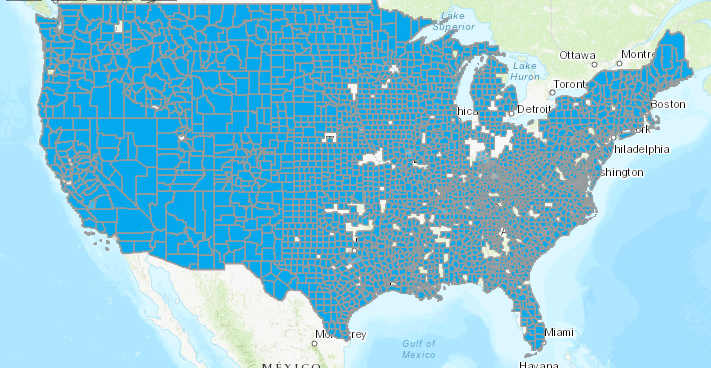Auction will consist of 8,000 county-level licenses
The Federal Communications Commission will kick off its next midband spectrum auction on July 29. On offer will be approximately 8,000 county-level licenses for 2.5 GHz spectrum, mostly in rural areas of the United States.
“Today we are readying the launch of the next 5G mid-band spectrum auction, following close on the heels of the recent, successful 3.45 GHz auction,” said FCC Chairwoman Jessica Rosenworcel. “The 2.5 GHz band auction can help deliver on the promise of 5G services and ensure that it reaches as many people as possible. The 2.5 GHz band spectrum provides an opportunity to fill in some of the critical 5G gaps in rural America. I look forward to the launch of this important auction.”
There are three channels available, according to the FCC band plan: Channel 1, which is 49.5 megahertz of spectrum; Channel 2 is adjacent to Channel 1 and consists of 50.5 megahertz of spectrum. There is also a smaller channel, Channel 3, which consists of 17.5 megahertz and is not adjacent to either of the other two channels.
This auction (Auction 108) will use an ascending clock format auction. The FCC also unveiled a new mapping tool so that would-be bidders can find out whether there are unassigned 2.5 GHz licenses in areas they are considering.

The 2.5 GHz (2.496-2.690 GHz) spectrum available in this auction is being sold as overlay licenses, as a result of FCC action in the past few years to reform the use of the band, which used to be known as the Educational Broadband Service (EBS) band. The former Sprint, in particular, had built up extensive leasing arrangements across the country with educational institutions who held EBS licenses. Overlay licensees, the FCC said, will have to protect operations of existing incumbents in the band. The FCC, in announcing the date and rules for the auction, noted that it had to address “numerous complex issues from smoothly wrapping up the first-of-its-kind Tribal priority window to questions involving the license inventory, given the unique history, widespread existing deployments in the band, and extensive secondary market arrangements.”
That Tribal Priority Window allowed Tribal villages or consortia to access spectrum licenses, with build-out requirements, so that they could utilize the spectrum for broadband or point-to-point connectivity. The FCC said that it has granted 335 licenses to Tribal communities so far, and it is still processing some Tribal applications, so there may be slightly fewer licenses to sell by the time the auction begins.

